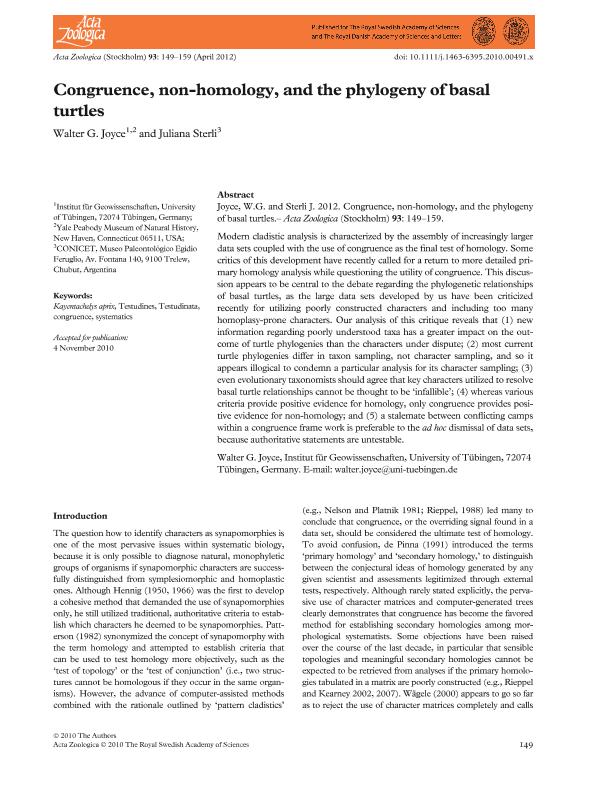Artículo
Congruence, non-homology, and the phylogeny of basal turtles
Fecha de publicación:
04/2012
Editorial:
Wiley Blackwell Publishing, Inc
Revista:
Acta Zoologica
ISSN:
0001-7272
Idioma:
Inglés
Tipo de recurso:
Artículo publicado
Clasificación temática:
Resumen
Modern cladistic analysis is characterized by the assembly of increasingly larger data sets coupled with the use of congruence as the final test of homology. Some critics of this development have recently called for a return to more detailed primary homology analysis while questioning the utility of congruence. This discussion appears to be central to the debate regarding the phylogenetic relationships of basal turtles, as the large data sets developed by us have been criticized recently for utilizing poorly constructed characters and including too many homoplasy-prone characters. Our analysis of this critique reveals that (1) new information regarding poorly understood taxa has a greater impact on the outcome of turtle phylogenies than the characters under dispute; (2) most current turtle phylogenies differ in taxon sampling, not character sampling, and so it appears illogical to condemn a particular analysis for its character sampling; (3) even evolutionary taxonomists should agree that key characters utilized to resolve basal turtle relationships cannot be thought to be 'infallible'; (4) whereas various criteria provide positive evidence for homology, only congruence provides positive evidence for non-homology; and (5) a stalemate between conflicting camps within a congruence frame work is preferable to the ad hoc dismissal of data sets, because authoritative statements are untestable.
Palabras clave:
CONGRUENCE
,
KAYENTACHELYS APRIX
,
SYSTEMATICS
,
TESTUDINATA
,
TESTUDINES
Archivos asociados
Licencia
Identificadores
Colecciones
Articulos(SEDE CENTRAL)
Articulos de SEDE CENTRAL
Articulos de SEDE CENTRAL
Citación
Joyce, W. G.; Sterli, Juliana; Congruence, non-homology, and the phylogeny of basal turtles; Wiley Blackwell Publishing, Inc; Acta Zoologica; 93; 2; 4-2012; 149-159
Compartir
Altmétricas




